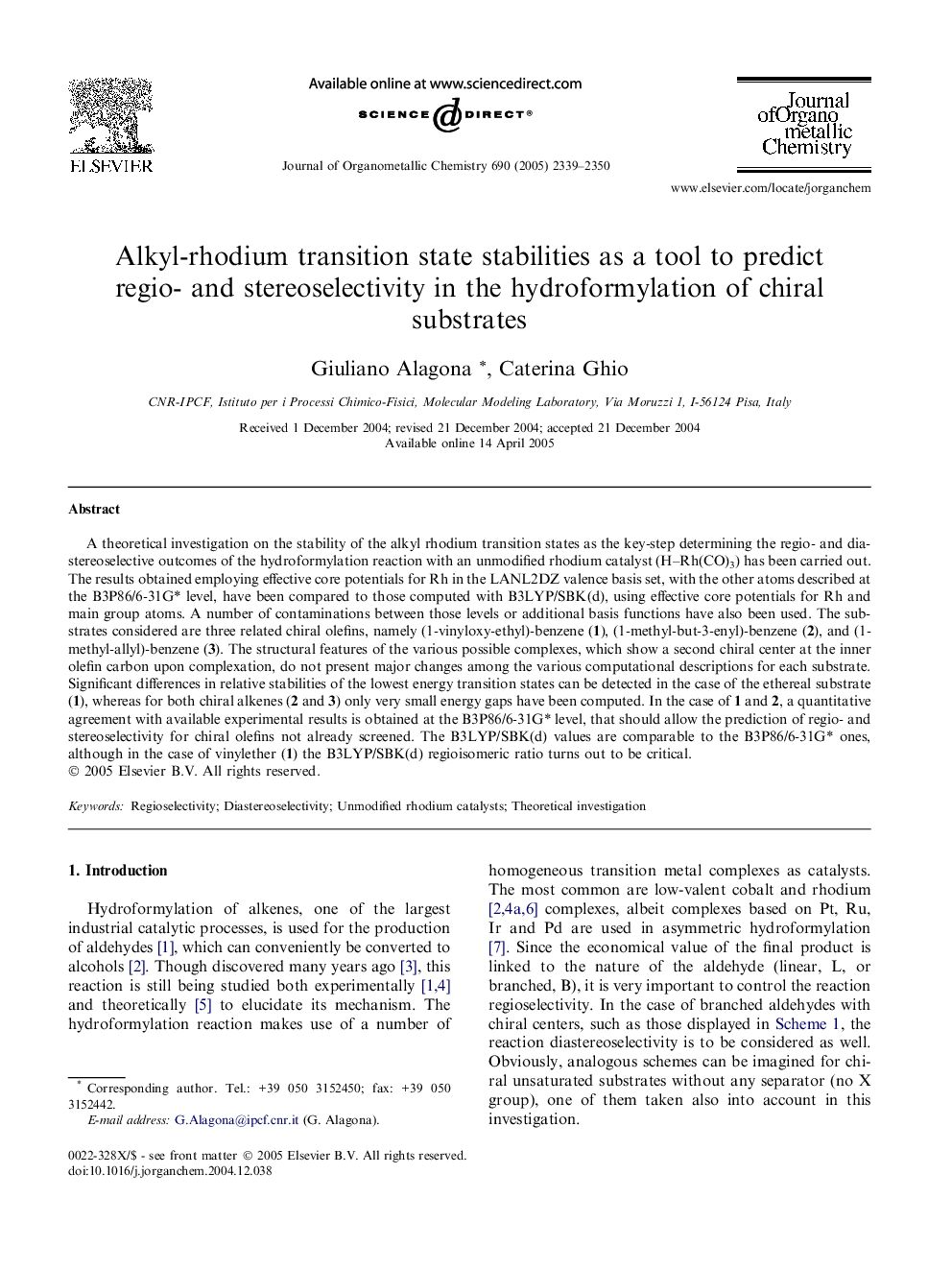| کد مقاله | کد نشریه | سال انتشار | مقاله انگلیسی | نسخه تمام متن |
|---|---|---|---|---|
| 1327934 | 977517 | 2005 | 12 صفحه PDF | دانلود رایگان |

A theoretical investigation on the stability of the alkyl rhodium transition states as the key-step determining the regio- and diastereoselective outcomes of the hydroformylation reaction with an unmodified rhodium catalyst (H–Rh(CO)3) has been carried out. The results obtained employing effective core potentials for Rh in the LANL2DZ valence basis set, with the other atoms described at the B3P86/6-31G* level, have been compared to those computed with B3LYP/SBK(d), using effective core potentials for Rh and main group atoms. A number of contaminations between those levels or additional basis functions have also been used. The substrates considered are three related chiral olefins, namely (1-vinyloxy-ethyl)-benzene (1), (1-methyl-but-3-enyl)-benzene (2), and (1-methyl-allyl)-benzene (3). The structural features of the various possible complexes, which show a second chiral center at the inner olefin carbon upon complexation, do not present major changes among the various computational descriptions for each substrate. Significant differences in relative stabilities of the lowest energy transition states can be detected in the case of the ethereal substrate (1), whereas for both chiral alkenes (2 and 3) only very small energy gaps have been computed. In the case of 1 and 2, a quantitative agreement with available experimental results is obtained at the B3P86/6-31G* level, that should allow the prediction of regio- and stereoselectivity for chiral olefins not already screened. The B3LYP/SBK(d) values are comparable to the B3P86/6-31G* ones, although in the case of vinylether (1) the B3LYP/SBK(d) regioisomeric ratio turns out to be critical.
The hydroformylation reaction with H–Rh(CO)3 was studied for three chiral olefins, employing different DFT methods/basis sets/effective core potentials. Structural features of TS do not remarkably change with the computational description for each substrate. Relative stabilities of the lowest energy TS significantly differ for the ethereal substrate; conversely very small energy gaps are computed for both chiral alkenes. Use of B3P86/6-31G*-LANL2DZ is recommended.Figure optionsDownload as PowerPoint slide
Journal: Journal of Organometallic Chemistry - Volume 690, Issue 9, 29 April 2005, Pages 2339–2350